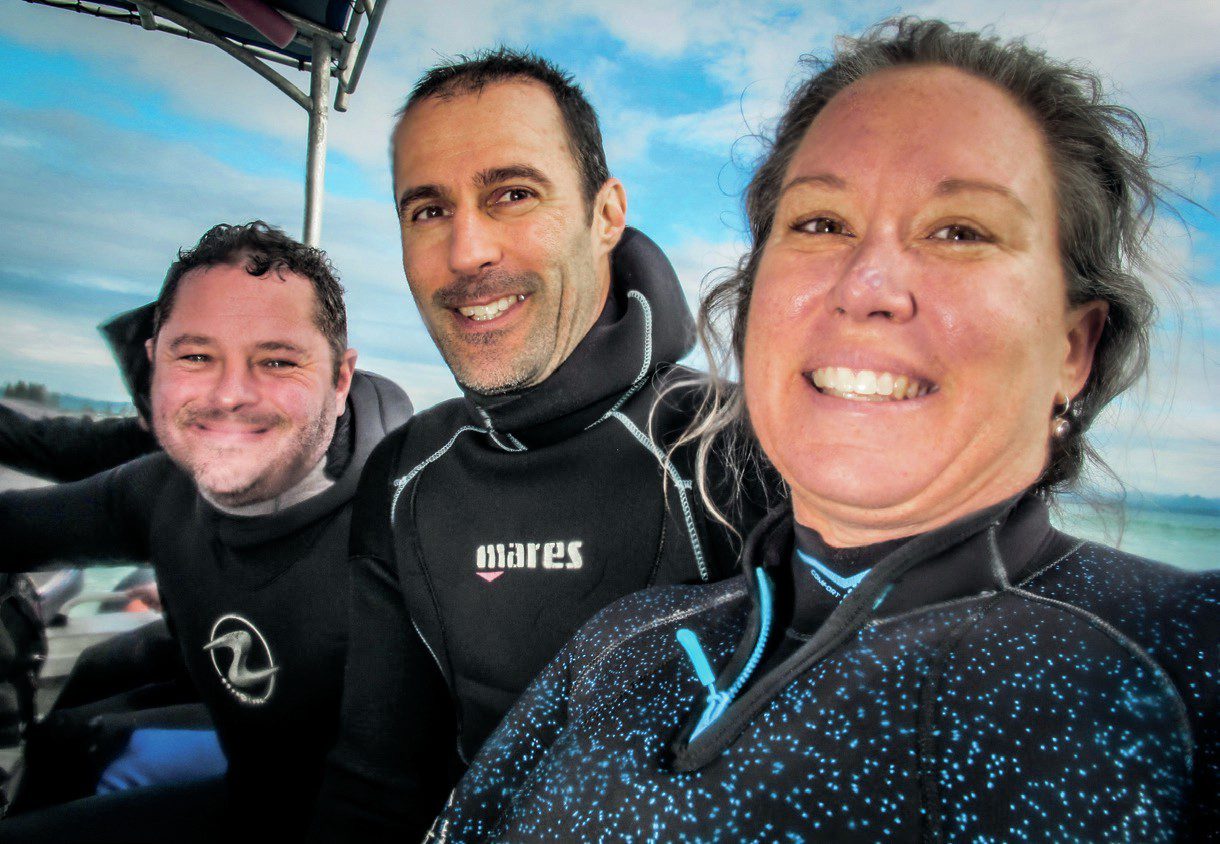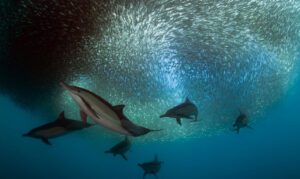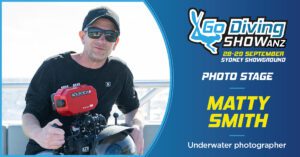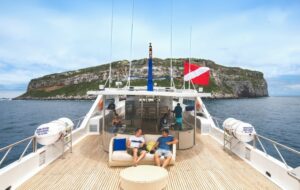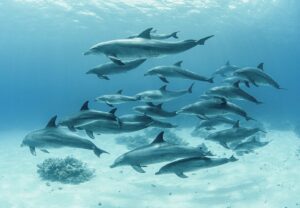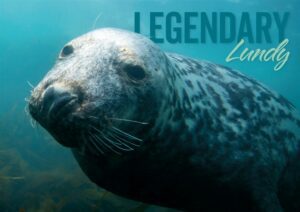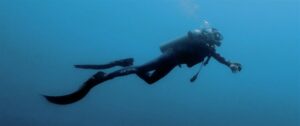PT Hirschfield chats to marine-life specialists Dr David Robinson, Dr Asia Armstrong and Dr Chris Rohner
Photography as credited.
‘A leopard shark ecologist, manta ray researcher and whaleshark expert walk into a Marine Megafauna Bar and order an eDNA sample…’ Dr David Robinson (Founder of Shark Watch Arabia and The Cape Byron Leopard Shark Project), Dr Asia Armstrong (database manager and research assistant of Project Manta) and Dr Chris Rohner (Marine Megafauna Foundation whaleshark specialist) have gathered once again at Julian Rocks in NSW’s Byron Bay.
Their mission is to collect an eDNA water sample (essentially containing a genetic barcode) to detect the absence or presence of leopard sharks. This water collection and analysis has been repeated every month for the past three years to help track seasonal changes.
Asia explains: “Sometimes in the cusp of the season maybe we don’t see leopard sharks, but eDNA still picks up that they are around. eDNA data feeds into a bigger international project called Reshark, looking at breeding threatened shark species in captivity and reintroducing them into wild populations. Leopard sharks breed fantastically in captivity laying eggs, not live young. The idea is to reintroduce animals to places where they existed naturally but have been heavily fished, which are now protected.” eDNA is just one of many technologies, including satellite tagging and AI spot pattern analysis, enabling marine megafauna experts to collect and analyse data which tracks the health, movement and population trends of shark and ray species locally and globally.
Dr David Robinson
David is a marine ecologist and owner of Sundive Dive Centre at grey nurse and leopard shark hotspot Byron Bay: “I spent 12 years at the Burj Al Arab in Dubai looking after every aspect of running the aquarium and rehabilitating 1,800 turtles, getting them back out into the wild. People were seeing many whalesharks in the Middle East, but no-one was gathering the information. So I founded Shark Watch Arabia which I run to this day, looking at whaleshark ecology. People send me citizen science sightings like they do now in Australia with leopard sharks.”
In 2019, David founded The Cape Byron Leopard Shark Project, saying: “I didn’t really know about the leopard shark aggregations at Julian Rocks when we bought the dive centre. This site is one of their most-important sites, one of their last strongholds in the world. But just because we might see 40 or 50 grey nurses or leopard sharks aggregating here for a few months every year, that’s not a big number from a global perspective.
“We’re trying to figure out why they aggregate at Julian Rocks in such numbers? Why do they behave as they do, swimming in the water column, where elsewhere they sit at the bottom?”
Technology plays a vital role in data collection and analysis: “If we see 40 leopard sharks on one day, are they the same 40 that we’re seeing every day for three months, or are different sharks coming and going? Are they coming in, mating then going out again and laying eggs, or coming in for longer periods? How many are in the population?’
“We’ve got an algorithm that can identify individual patterns in a population, so we can see what residents are here. Once you’ve got a population size, then you can approach government bodies about protecting them. This is what happened with the whalesharks in Arabia. They were moved from vulnerable to endangered, based on sightings data collected over six years. Hopefully similar protection can be secured for leopard sharks in Australia.”
Dr Asia Armstrong
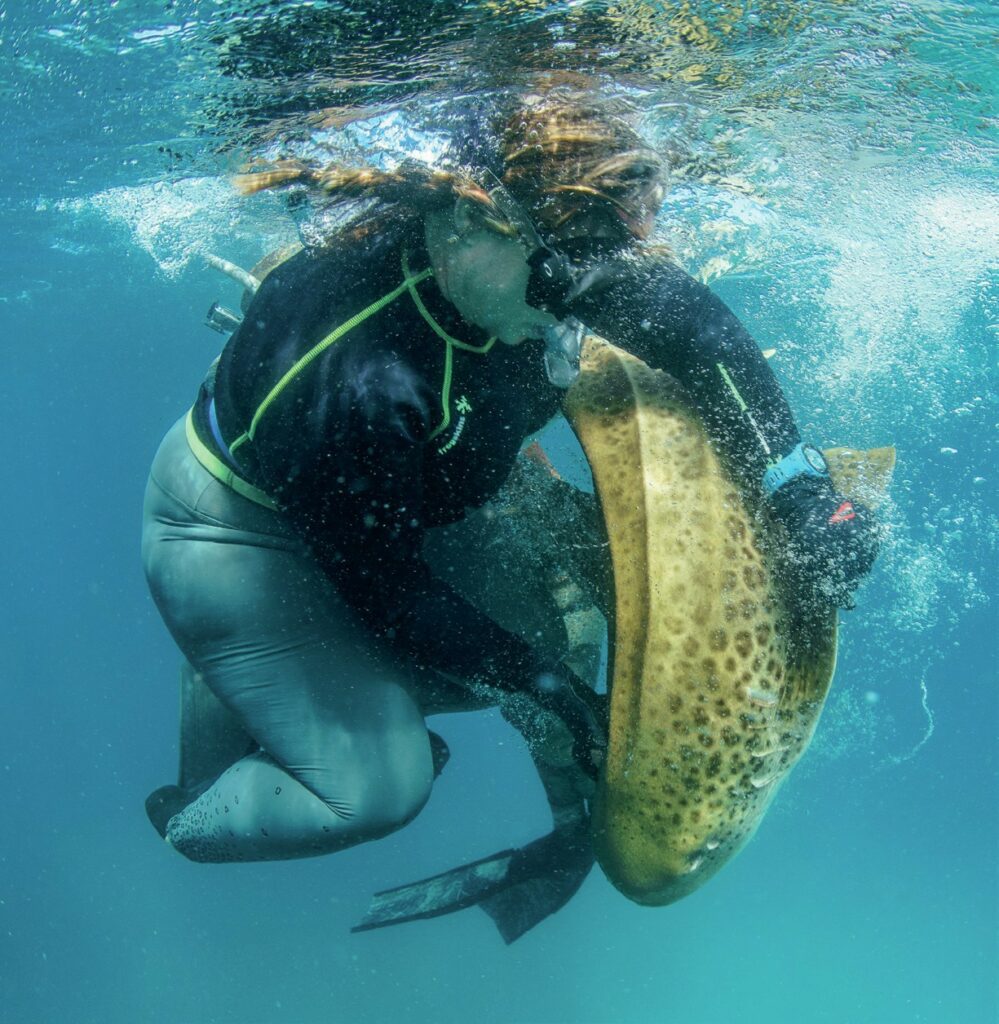
© SIMON PIERCE
Asia completed her PhD on the spatial ecology of manta rays at the University of Queensland in 2022. Her doctorate focussed on habitat use at cleaning stations, finding that density and distribution of cleaner wrasse drove manta habitat use in these spaces. “I first dived with mantas in 2008. At that point, very little was known in the literature. So at 29, I went back to university to become a marine scientist and find out more. Lady Elliot is my main study site, but I’ve done research during my PhD in the Maldives and at Ningaloo Reef.
“I found you can use the spot patterns on mantas’ bellies to delineate their populations globally. Using AI, I analysed whether the variety of the spot patterns within a population are more similar to each other than the variety of spot patterns between populations. I also found that in one of their larger aggregation sites, they’re feeding on a large bodied copepod species which seems an important tropical species for these megaplanktavores.
“We don’t know where mantas pup and where the young are around the Australian coastline. We want to understand more about their distribution in offshore waters. Are they moving into international waters, or into areas where they may experience increased threat? Those are the two main focuses of our future research. Tagging approaches will be used, then where we can’t actually see these animals we’ll be taking eDNA samples to see if we can detect them in the water.’ Visit project manta.com for more info.
Dr Chris Rohner
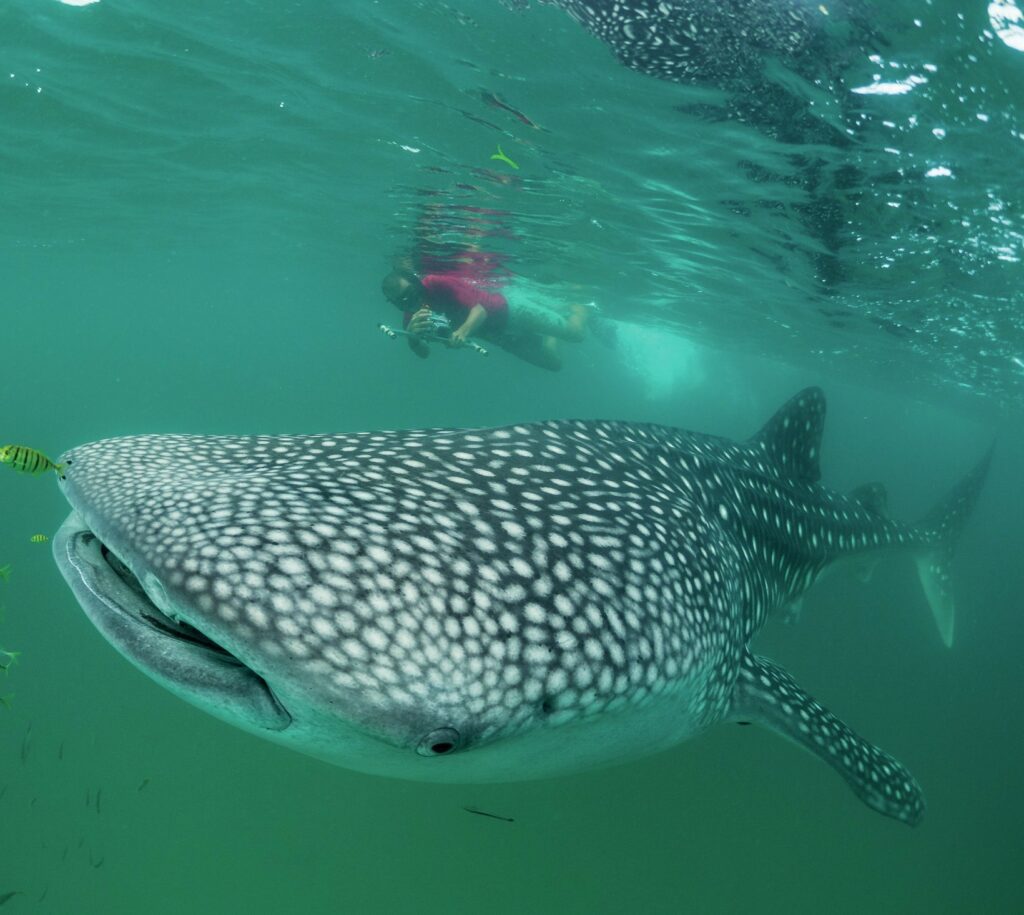
© SIMON PIERCE
Chris completed his PhD on whalesharks, working with an aggregation in Mozambique: “Analysis of the data showed a steep declining trend of whalesharks seen each year in the area studied, around 70 or 80 per cent. We know they’re in danger. We’ve just done a study in Tanzania and we’re working on something now in Madagascar. We’re trying to find out how we can reduce the threats. While many fisheries of whalesharks have stopped, they still get caught and bycatch is a problem. We’re doing a tagging study in the Galapagos now, making spatial risk assessments of where we need to focus our attention.
“Many aggregation sites are dominated by juveniles, mostly males, so we don’t really know where the females or adults or the babies are, making it difficult to estimate a total population size. We only see a fraction of the population and we’ve studied that fraction quite well. There’s one population in the Indo-Pacific. With genomics we might be able to pick up some structure within the larger population. Genetic work is long term and threats are short term, so when we find out which area of the population is more at threat, we can focus attention there.” Visit marinemegafauna. org for more info.
Show me the leopard sharks!
Summer is the perfect time of year to experience Byron Bay’s spectacular leopard shark aggregation! Visit sundive or call (02) 6685 7755 for more information.

This article was originally published in Scuba Diver ANZ #54.
Subscribe digitally and read more great stories like this from anywhere in the world in a mobile-friendly format. Link to the article
